Disposal of fluorescent lamps: where should you dispose of spent appliances
Disposal of fluorescent lamps should be a mandatory procedure for every person and any organization. Since they will be safe only as long as the design maintains integrity.
The reason for this is the presence in their flasks of mercury vapor, capable of causing serious, and sometimes irreparable, damage to human health, water, and soil even with short-term contact.
In this material we will tell you why you need the disposal of fluorescent lamps, where to put the spent devices and how to dispose of them.
The content of the article:
Why is recycling necessary?
The design of each fluorescent lighting device contains up to 7 milligrams of mercury. At first glance, this is not enough. For example, in any thermometer such a substance is tens of times more.
But the peculiarity is that only a few grams of mercury vapor have a 16 times larger spot of contact with the surrounding air than a few kilograms of the same metal in a liquid state.
As a result, the contents of the flask saturate with poison up to 50 cubic meters of space and the permissible norm will be exceeded by 160 times.
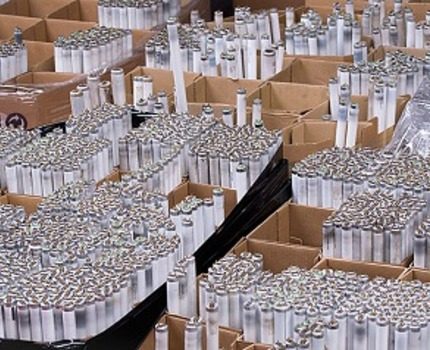
Therefore, in case of depressurization of a fluorescent lamp of any manufacturer in the room, a situation is created that relates to the first hazard group.
That is, the highest, since even a short exposure can cause serious damage to the cardiovascular, immune, nervous systems, gastrointestinal tract, organs of vision, and skin.
In addition, mercury can quickly accumulate in the human body, as a result of which its effect will be long-term. No less dangerous are fluorescent lamps thrown into general waste bins in apartment buildings or in the private sector.
In this case, microorganisms actively affect mercury vapors, as a result they turn into a readily soluble and very stable compound (methylmercury), which can poison hectares of water and soil for decades.
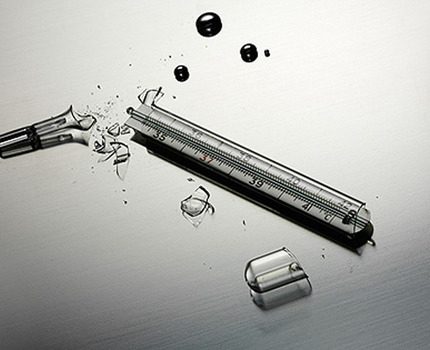
The problem is complicated by the fact that until recently, hundreds of millions of fluorescent lamps were sold annually in the post-Soviet territory. Which are now starting to develop their resource.
User contribution to the recycling process
Theoretically, this operation is not fraught with any difficulties. So, all that a person needs is to perform in a certain order several simple actions.
Which are the following:
- A blown fluorescent lamp must be packaged in a complete plastic bag. Which will prevent mercury poisoning in case of unexpected depressurization during the disposal procedure.
- Take the device to a collection point.
It should be remembered that the dismantling, transportation, storage of a used lighting device should not be treated negligently. For example, place it in an ordinary garbage bag or leave it in another place where accidental damage may be caused.
After completing all of the above, the owner’s mission will be considered completed. But in practice, everything is more complicated, the reason for this is the insufficient number of places designed to collect fluorescent lamps.
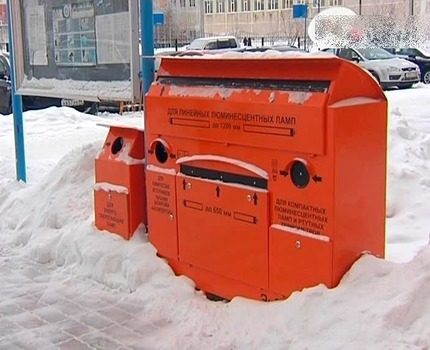
According to the guidelines of almost all countries in the post-Soviet space, the management of multi-apartment buildings should be engaged in the collection of unsuitable lighting devices containing mercury. They are partnerships of tenants, managing organizations, and also such duties are imputed to ZHEKam, REU.
For example, in Moscow, absolutely all housing maintenance offices are equipped with the equipment necessary for collection and they are serviced by trained specialists.
But most of the leaders of ZHEKs of the country, for various reasons, ignore such requirements, therefore, these items in some regions are quite rare. But they are, at least in all major cities.
And to find the nearest one, it’s enough:
- use the internet;
- call back to the managing organization, ZHEK, MES.
Often, commercial organizations help out officials and collection points for all kinds of mercury-containing lamps are created in stores of retail chains, and often even at points for receiving batteries. For example, in Russia they are in many IKEA supermarkets.
In addition, caring citizens can call on the management of ZHEKs to fulfill their duties in writing. Moreover, the equipment of the point is a simple procedure. Since all you have to do is install a small, sturdy container.
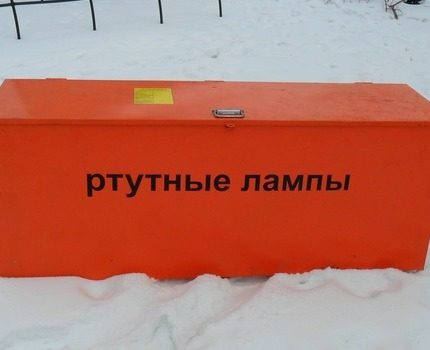
And the reception can be carried out by regular electricians of ZHEKs, management companies, which subsequently transfer their used devices for recycling, which is convenient for residents.
In addition, it is not difficult to organize such an order, since special skills and the presence of any special tool are not required for this.
Be sure to remember that at the collection points of lamps responsible persons accept only sealed products, that is, whole, without signs of damage.
In unsuitable condition, they should not be transported or attempted to be disposed of. Since it can be hazardous to health. In view of this feature, when the lamp depressurized in the room, it is better to call the representatives of the Ministry of Emergencies.
It is also necessary to have information that all products that have not worked out the warranty period can be returned to the seller. In such cases, even the possibility of a refund or replacement is provided.
The warranty period can be up to 2 years, sometimes you can find out the exact information by looking at the data on the package.
And if the collection point is far away?
It often happens that a fluorescent lamp has developed the required resource, so it must be disposed of, but the collection point is not far away and it is not profitable to go there, but there is no desire to simply throw it away.
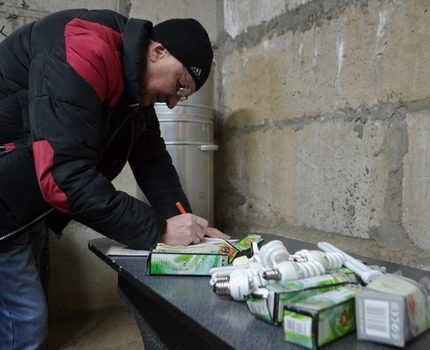
In the described situation, a person can simply pack the flask in a whole plastic bag and put it in some kind of durable container.
Which can be any rigid container that can prevent depressurization of the lighting device due to careless handling. Then it must be put in a place that children and animals cannot reach.
In this way, lamp storage can be performed over a long period, but, nevertheless, it should not exceed six months. And the indicated time is quite enough to find a convenient way to deliver the lamp to the collection point.
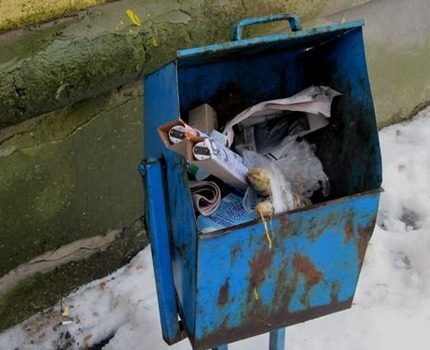
In addition, many large cities have commercial organizations disposing of mercury-containing products. The specialists who carry out the collection, and they arrive at the right place on call. But in most cases, you have to pay for such a service.
And as a result, it can be beneficial only to large enterprises that have to solve the problem with dozens, hundreds of burned out lamps.
Disposal of a damaged lamp
No one can insure against any unpleasant accidents. Therefore, it is always necessary to remember that it is sometimes necessary to get rid of a burned-out device urgently and you need to be prepared for this. Indeed, it depends on efficiency - whether damage will be caused to health or the environment.
Product Damage Safety Precautions
So, if illuminated a room Fluorescent Lamp was broken, received damage, then a person, in order to avoid poisoning, it is necessary to take operational measures.
Which include:
- evacuation of people, animals;
- airing the room;
- harvesting the remains of the flask;
- call representatives of the Ministry of Emergencies.
It should be remembered that evacuation should be performed immediately after identifying damage to the fluorescent lamp. In this case, headlong somewhere to run is not worth it, just go into the next room.
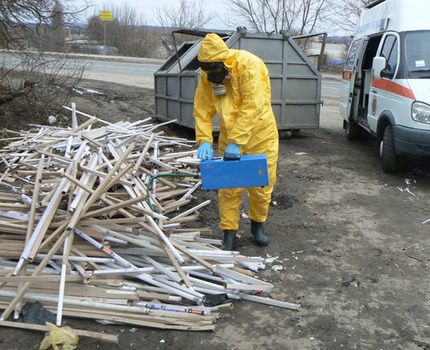
The room itself, where the depressurized lamp is located, must be insulated, that is, the doors must be tightly closed. If they are not, then you should use fabric, other improvised material.And only after that open the windows for airing.
The procedure should be in the described order due to the fact that when the apartment is aired with air, there is a high probability that significant accumulations of mercury vapor will spread throughout its area, and some of them will accumulate in the “dead zones” and can affect health tenants.
Insulating the room will also help prevent the spread of glass breakage with the accumulated substance in other rooms.
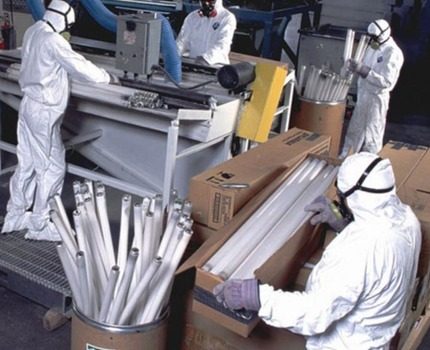
The duration of ventilation should be at least 20-30 minutes. During this time, the bulk of the mercury vapor will evaporate and people will be able to clean. Why do you need to protect the airways with a cotton gauze bandage or just a damp cloth.
For work, you can use two pieces of cardboard. One of them will serve as a shovel for a person, and the second must be used as a broom, raking them the remains of broken structural elements.
With unprotected hands, helping yourself is not worth it, as mercury particles easily penetrate the pores of the skin. What in minutes can lead to serious poisoning.
If parts of a broken lighting fixture fell on a carpet, soft children's toys, then they should be hung out on the street for thorough ventilation. The duration of which should be several hours.
After that, all of these things can be used in everyday life without any additional processing. Since after the weathering of mercury vapor, they will become absolutely safe.
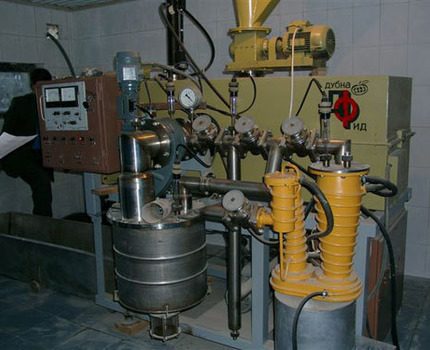
It is not worth throwing the assembled cullet somewhere; it is better to pack it in cellophane, a tightly closed container, any other container. Next, the remnants of the fluorescent lamp should be transferred to the Ministry of Emergencies, which must be called up without fail.
Even if the owners of the premises successfully cope with the elimination of the consequences on their own, the presence of rescuers is necessary so that they check the suitability of housing, any other premises for people to be there.
And if necessary, surfaces in contact with mercury can be treated with special solutions, which will finally eliminate the danger to human health.
All of these actions after depressurization of any fluorescent lamp should be performed without fail and residents should not be reassured by the absence of any signs of danger.
Since mercury vapors are colorless or odorless, which means that their presence cannot be detected without special equipment. Although for a short time the concentration of the substance in the room where the lamp is broken will exceed the permissible norm by tens or even one and a half hundred times.
How is recycling done by specialists?
The delivery of fluorescent lamps to a collection point is only the first stage of processing. Since this is a rather lengthy and complex operation, which can only be performed using special equipment.
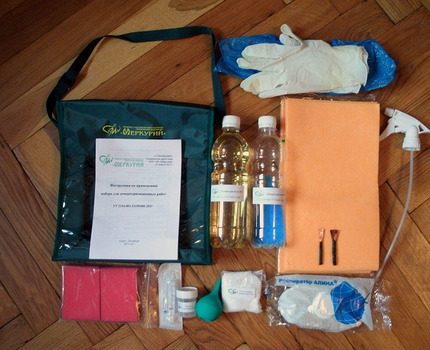
The next stage of disposal is the cutting of lighting devices, which is done using an installation called a demercurizer. Where they are crushed into small elements in order to free all particles of mercury.
Which are then bound by the sorbent and enter the condenser, there they are deposited, converted into liquid metal. The final stage is its sending to the enterprises for further use.
Another type of processing used allows freezing vapors in a vacuum chamber. Which also makes it possible to obtain a liquid metal, exactly the same as used in thermometers. Further it can also be used in industry.
In addition, an important task during disposal is the separation of several grams of phosphor - such an amount is contained in each fluorescent lamp. Although less harmful than mercury, it is still a danger. Therefore, subject to mandatory burial.
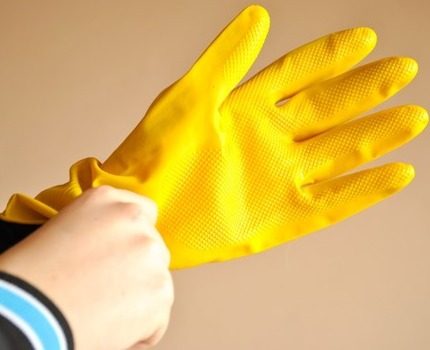
But even lamp waste is a danger to people. And to level this factor, the phosphor and other parts are transported in sealed containers during transportation to the processing sites, sprinkled with cement, which is able to bind the remaining mercury vapor.
Our website contains material on the topic: why is it needed and how is the replacement of fluorescent lamps with LEDs carried out. We recommend reading it. Read more - read Further.
Conclusions and useful video on the topic
A video about the harmfulness of mercury-containing lamps and how to get rid of them correctly when the resource is exhausted:
The following video shows how the processing of sealed flasks with unhealthy vapors occurs:
The disposal procedure for ordinary citizens and organizations is to transfer blown fluorescent lamps to equipped collection points. This is not always convenient, and enterprises, in general, have to pay, but this must be done. Since non-compliance with the requirements leads to a significant negative impact on the environment, and therefore on human health.
If you still have questions about the topic of the article, please leave comments in the block below. There you can share your experience and give practical advice to visitors to our site.

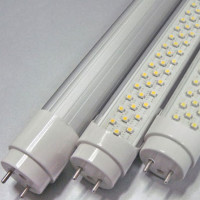 Replacing fluorescent lamps with LEDs: the reasons for the replacement, which are better, replacement instructions
Replacing fluorescent lamps with LEDs: the reasons for the replacement, which are better, replacement instructions 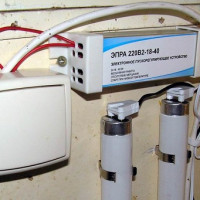 Electronic ballasts for fluorescent lamps: what it is, how it works, wiring diagrams for lamps with electronic ballasts
Electronic ballasts for fluorescent lamps: what it is, how it works, wiring diagrams for lamps with electronic ballasts 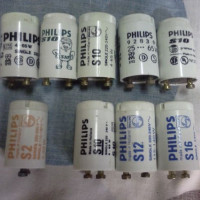 Starter for fluorescent lamps: device, principle of operation, marking + subtleties of choice
Starter for fluorescent lamps: device, principle of operation, marking + subtleties of choice 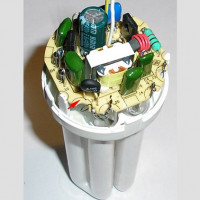 Inductor for fluorescent lamps: device, purpose + circuit for connecting
Inductor for fluorescent lamps: device, purpose + circuit for connecting 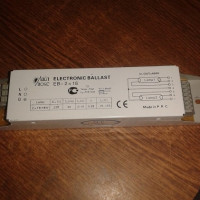 Ballast for fluorescent lamps: why is it needed, how it works, types + how to choose
Ballast for fluorescent lamps: why is it needed, how it works, types + how to choose 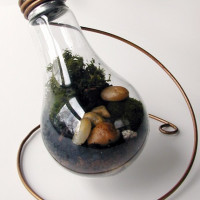 How to disassemble a light bulb: instructions for parsing various types of lamps
How to disassemble a light bulb: instructions for parsing various types of lamps 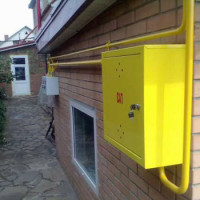 How much does it cost to connect gas to a private house: the price of organizing gas supply
How much does it cost to connect gas to a private house: the price of organizing gas supply  The best washing machines with dryer: model rating and customer tips
The best washing machines with dryer: model rating and customer tips 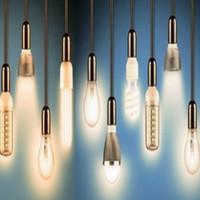 What is the color temperature of light and the nuances of choosing the temperature of the lamps to suit your needs
What is the color temperature of light and the nuances of choosing the temperature of the lamps to suit your needs 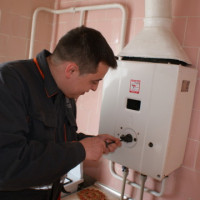 Replacement of a geyser in an apartment: replacement paperwork + basic norms and requirements
Replacement of a geyser in an apartment: replacement paperwork + basic norms and requirements
The problem with the disposal of fluorescent lamps has always existed and will exist until every person understands what danger this lamp is fraught with. Every day I take out the garbage from the apartment and in the trash cans the discarded fluorescent lamps, some of them are already broken and it's all in the courtyard with residential buildings, in general, some kind of horror. For this, serious fines must be introduced, as for terrorism, then, perhaps, they will start to think with their head, and not with their ass.
Or, first of all, it is necessary to clearly explain to people why it is dangerous to throw out fluorescent lamps and how to properly dispose of them? Punish, fine, ban, do not let go! Maybe this is enough? Moreover, the younger generation uses fluorescent lamps to a greater extent, which itself should be interested in maintaining their health.
Often spent fluorescent lamps simply have nowhere to turn in. In large cities there are both special services and those in which there are containers for collecting spent devices of the type of magician. IKEA. In small cities, even if people know about the dangers of these wastes, they simply do not have the opportunity to dispose of them correctly.
Another aspect is the enterprises, the number of lamps which are much larger. Disposal is not only troublesome, but also expensive, so only a small part is officially rented out. The lion's share is simply dumped into general garbage. That's where the real harm is.